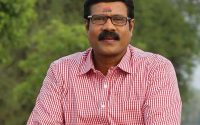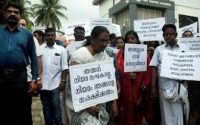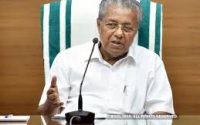$100 Website Offer
Get your personal website + domain for just $100.
Limited Time Offer!
Claim Your Website NowWhat can be done about trial by media?
Source:-newindianexpress
Litigation is not always a search for truth. According to philosopher Charles Taylor, it is a “zero-sum game”, where the law only says “either A or B is right”. It does not consider the multitude of truth and complexity of events, issues or individuals. British Marxist Terry Eagleton put it in perspective: “Court rooms, like novels, blur the distinction between fact and fiction. … The jury judge not on the facts but between rival versions of them.” (The Guardian, 25 May 2005) When trial by the court itself is inherently problematic in the adversarial system of justice, a media trial poses additional issues. Hate campaigns, accusations and witch-hunts impact the juridical process enormously. They also contaminate the cultural and intellectual ecology of the nation.
Constitutionally, the press in India has no special rights, said Dr Ambedkar. But a free press is a political imperative for democracy to survive. In a criminal trial, the prosecution and the accused have the right to a fair trial. Between free speech and fair trial, the borders are sometimes crossed and the rules breached, leading to devastating consequences to individuals and institutions. The ‘tele-terror’ should not be allowed to meddle with a trial in accordance with the law. The digital violence in itself is a breach of peace.
Media is an institutionalised anarchy, in a liberal and positive sense. The court, on the other hand, has to go by the rules of adjudication and the mandate of the law. Justice V R Krishna Iyer remarked that the court is “not an inert abstraction but people in judicial power”. Media, on the other hand, is people in abstraction who can ideally speak against the power. Because some among them go berserk, it does not follow that a case for curtailment of media freedom is made out.
This is probably why during the court deliberation in the Sudarshan TV case, Justice D Y Chandrachud orally remarked that a judicial injunction can only be the last resort as it is like a “nuclear missile”. High Courts in Delhi and Bombay have already seized certain issues of trial by the media. Reports say that a plea for reinterpreting the provisions related to criminal contempt has been filed in the Bombay High Court. The demand is to stretch Section 3(2) of the Contempt of Court Act “to cover publications obstructing the administration of justice in pending cases from the stage of FIR registration” itself, according to a recent report by Meera Emmanuel in an online platform.
A full Bench of the Kerala High Court has referred the issue concerning the need to frame “guidelines” on court reporting to a larger Bench in 2018. The Supreme Court has expressed concern over the matter on several occasions. Cases like In Re P C Sen (1968), Sushil Sharma (1996) and M P Lohia (2005) are some examples. The trial on television has the tendency to portray anyone as an accused and any accused as a culprit. This can influence the judicial process, though it should not. Some studies have shown that conviction rates in celebrity crimes are relatively higher. Prejudice, bias and fear of ‘public opinion’ are impediments to the juridical process.
The media outlets, instead of trying the case, need to closely watch the institutional and processual deficits. There are striking illustrations where the media has played a positive and proactive role. Censorship can inhibit such fine facets of a free press. A judicious balance has to be struck. It was in the Sahara case (2012) that the top court said that the media could only be subjected to self-regulation. This has been, however, wishful thinking. Horrific offences or unfortunate suicides or even ordinary deaths get politicised, communalised or commercialised.
Ideally, a judge, a hermit in his own way, should be able to maintain the serenity of judicial process. Lord Mansfield in R v. Wilkes (1770) said: “I pass over many anonymous letters I have received. Those in print are public; and some of them have been brought judicially before the Court. Whoever the writers are, they take the wrong way. I will do my duty unawed.” But rhetoric is not reality. In a research done by V V L N Sastry of Walden University titled “Influence of Trial by Media on the Criminal Justice System in India” (May 2019), one finds the gravity of the threat.
His study indicates that many lawyers believed there were instances where judges altered the judgment due to media influence and where “intensive case analysis by media before completion of the legal process” impacted the verdict. He says that “for a long time, India’s criminal justice system has remained unenthusiastic about allowing unfettered media access to their functions and deliberations”. People might suffer enormously when the decision-making process is vitiated by external factors of any kind.
Trial by the media is not merely a legal issue. It is also a political problem. On the one hand, it derails the lawmen from the legal track. On the other, it also distracts the laymen, the ‘public in the republic’, from crucial issues like economic disasters, unemployment or the growing unfreedom. Authoritarian regimes always have invisible ministries for distraction which manifest through the media that they hire. Democracy requires perpetual vigilance.a



